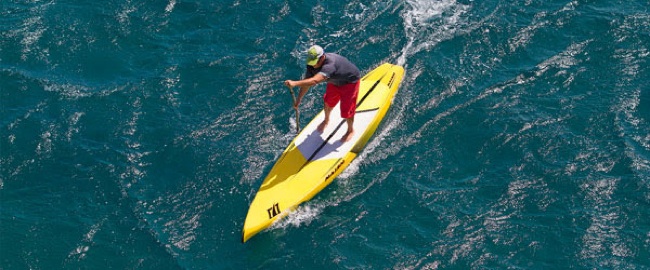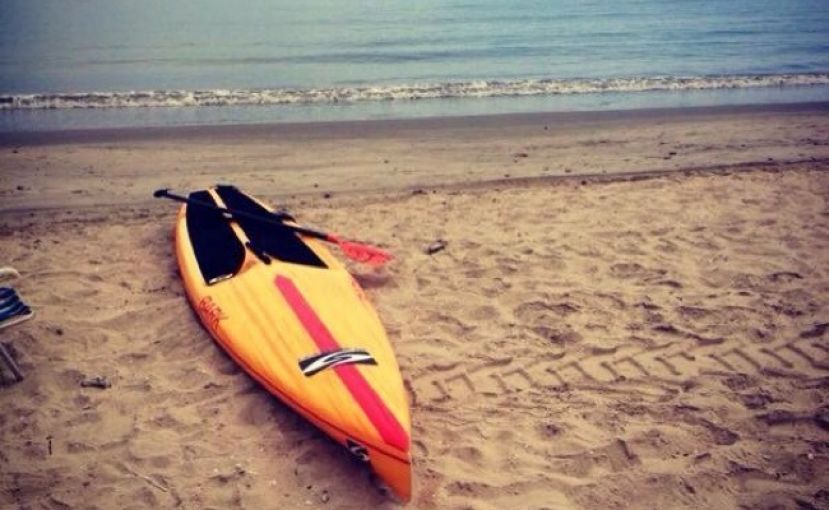SUPAA Makes Important Announcement On Board Restrictions
- Written by Staff
- Published in News
- Comments::DISQUS_COMMENTS
Image: Supconnect Photo Of The Month Enrant, Daniel Perini
SAN DIEGO, California - We are happy to announce that SUPAA and the leading board manufacturers in the world have agreed to establish stand up paddle board restrictions. This is an important milestone to help ensure our sport continues positive and inclusive growth. Continue reading to find out why we are creating restrictions and what to expect from this development.
Countless individuals are joining the stand up paddle movement every day. Soon after experiencing their first moments standing on the water, paddlers are hooked on SUP and ready for more of that amazing feeling. Many of these paddlers will soon discover our great community of paddlers and the thrill of stand up paddle racing. A race board, paddle and all the gear needed to be a SUP racer will be purchased and a new member of the SUP racing community will be born.

From a first-time, shaky legged paddler, to competing next to the top racers can usually take less than a month. There are not too many sports in the world where a completely new athlete can go from never even trying the sport, to a full-blown competitor in such a short amount of time. This is the beauty of our sport. However, we are at risk of greatly damaging this short process and causing it to become much longer, harder and expensive.
If we are not proactive in our vision and development of SUP race boards, we run the risk of severely limiting potential participation. Race boards are becoming increasingly narrow and harder to ride. The simple act of standing on a board to race should never become skill prohibitive to a large percentage of the paddling population.
This is not some far fetched idea, it is already happening. People are not attending races, or limiting their participation because of difficulty paddling unstable race boards. Other sports have seen huge declines in popularity because of these same principles (see windsurfing, snowboarding, Olympic paddle sports).
SUP is fine right now, but we are at a tipping point in race board development. Boards are being made that are 20’’ inches wide with many more companies looking to produce in the same area. In an effort to keep SUP from tipping toward boards that only a small percentage of paddlers can ride, we have established board restrictions.
SUPAA has created board specification limits that have been agreed upon by the top international manufacturers in our sport. Before we get into the specs, lets talk about the debate surrounding board development. Manufacturers and athletes are continuing to push the limits of board design with increasingly narrow and lightweight boards. Innovation and design are a huge part of the evolution of any sport. SUPAA believes that these developments are often great for stand up paddling and everyone involved. However, pushing the boundaries of development too far can have a detrimental effect on the growth of a sport.
At a certain point producers can lose sight of the fact that pushing design is not always better for the sport as a whole. More aggressive designs usually come at the expense of stability and cost in stand up paddle board development. The more a product costs and the harder it is to use, the fewer customers you will have.
Jim Terrell, 4-time Olympic canoeist and owner of Quickblade Paddles, said it best in a article proposing board restrictions on SUPracer.com:
June 3rd, 2013: ‘Here’s why I believe this is so important (in fact I’d say it’s critical to the future of the sport)… The width requirement stops the sport from evolving like canoeing did, to the point where it’s a balance contest between the lightest and most agile paddlers, rather than a test of strength or endurance.
The weight requirement stops the sport from evolving into an arms race where only the richest can afford the competitive boards. Again, I saw this happen first hand in canoe racing…
The deck depth requirement stops the sport from evolving from “Stand Up Paddleboarding” into “Stand Up Canoeing”.’
We would be foolish to ignore the experience and knowledge from someone like Jim. Read the entire article for a great in-depth review of the board debate. We want the sport to continue to grow in an inclusive way that is not cost or skill prohibitive.
We can continue to make boards narrower, lighter and more expensive until there are fewer and fewer people willing or able to participate. Windsurfing, Snowboarding and Olympic paddle disciplines are just a few sports that have suffered at the expense of a short-sighted development agenda. We already have board restrictions on length.
Board restrictions are nothing new for stand up paddling. In fact, from the beginning of SUP racing we have had restrictions on the length of boards. The Battle of the Paddle introduced a maximum length limit of 12’ feet 6’’ inches at their inaugural event in 2008. There are rumored to be pictures of someone sawing off the nose of their board in order to make the requirement!
The way in which 12’6’’ was decided upon is an interesting topic for an entirely new discussion on 12’6’’ vs. 14’ that we will tackle in a future article. Until then, think about the fact that the whole reason 12’6’’ was chosen was because the largest foam blanks available to shape a board where 13’’ feet. Should we base the entire future of a sport on having two classes because one was decided by the availability of material that has no longer become an issue? More on this topic later!
Through our board restrictions we will see an increase in unlimited development. The unlimited class is for those paddler and designers who want to push the envelope of SUP board design. Board designers may be encouraged to create new and exciting designs that trickle down to benefit smaller board designs. There is still plenty of room for innovation.
How did we come up with the specifications?
SUPAA works in conjunction with manufacturers and all stand up paddle constituent groups. After detailed discussions with athletes and most major brands, we came to a final agreement that worked for all parties involved. Starboard, Naish, Fanatic, BIC, 404, NSP, Imagine, JP, Kings and Bark are brands that SUPAA has collaborated with to establish international board restrictions.
We applaud these companies for their foresight in working to keep stand up paddle board growth for many years to come. We welcome all brands to join this list of companies supporting the SUPAA board restrictions.
Svein Rasmussen, brand manager for Starboard, (one of the companies pushing the design envelop the hardest) had this to say on working with SUPAA:
It's exciting to stake out an ambitious direction to maximize participation, performance and gear availability. Rules outlined at this early stage of our sport must be reviewed each year as we all need to keep the hand on the pulse to see what amendments might be needed to not hold development and technology back. I have probably tested close to 300 different race board shapes since we started our race development program and feel that the SUPAA "box" provides a great platform for our future board development.
Peter Durham, brand manager for BIC SUP:
“BIC SUP is fully supportive of placing some limitations on the specifications of boards used for SUP Racing. While product design and development is an important part of any sporting competition, it is important that this doesn’t become the end result in itself.
Athletic achievement is just as if not more important for the sport of SUP, as for any sport, and sometimes it is necessary to level the playing field to some degree so that a maximum number of people can participate – from recreational weekend athletes right through to your elite and professional riders.
Ultimately, maximizing participation in SUP will ensure the long-term future of the sport for all parties : participants, athletes and manufacturers. Our priorities should be to keep it simple, fun and fair. Holding events on boards that only a few can even stand on or afford doesn’t help anybody.”
Danny Ching-owner of 404 paddleboards and 6x BOP champion:
‘Manufacturers and athletes have come together and placed restrictions on themselves in order to preserve the essence of fair racing and to increase SUP participation globally. By adding reasonable building specs, SUPAA has maintained one of sup racings greatest strengths, it's minimal barriers to entry (low cost, easy to do). These specs will allow greater participation in sup racing throughout the industry resulting in more SUP customers.’
If you are a brand representative who we have not heard back from please comment and allow us to add you to this list if you agree to the terms. Below are the agreed upon board restrictions for 2014. We will reevaluate these guidelines annually with the input of athletes and brand managers.
These guidelines will be upheld by the agreeing manufacturers and enforced at all SUPAA sanctioned events in 2015:
Existing boards that do not meet these requirements will be legal until 2016. New boards that do not meet our requirements will be illegal at SUPAA events in 2015.
To find out how to hold your event to the highest standard of excellence, visit the SUPAA Race Management page.
This year we will be certifying SUPAA race officials and sanctioning our first events with board restrictions in 2015.
We welcome all input and look forward to a great future for stand up paddling.
14’ width minimum of 23’’ inches as measured at the 3 inch rail mark.
12’6 width minimum of 23.75’’ inches as measured at the 3 inch rail mark.
14’ weight minimum of 10kg (22.05 lbs)
12’6 weight minimum of 9kg (19.84 lbs)
No board shall have raised rails greater than 12.5 cm as measured from the standing area to the top of the rail.
To support our mission and receive access to exclusive training tips, information and discounts become a SUPAA member.

Staff
Submit your news, events, and all SUP info, so we can keep promoting and driving the great lifestyle of stand up paddling, building its community, and introducing people to healthier living.
Website: supconnect.com Email This email address is being protected from spambots. You need JavaScript enabled to view it.





